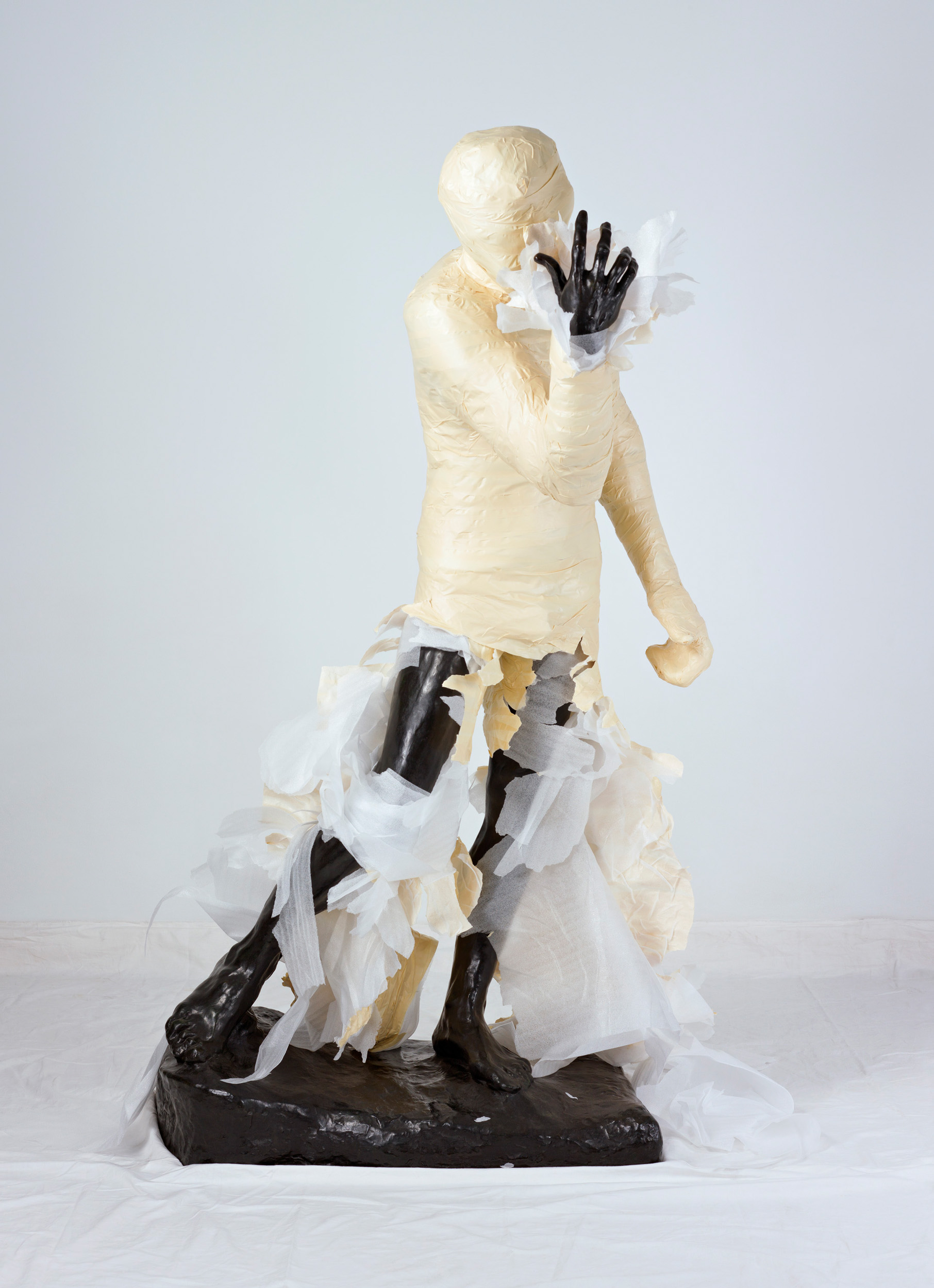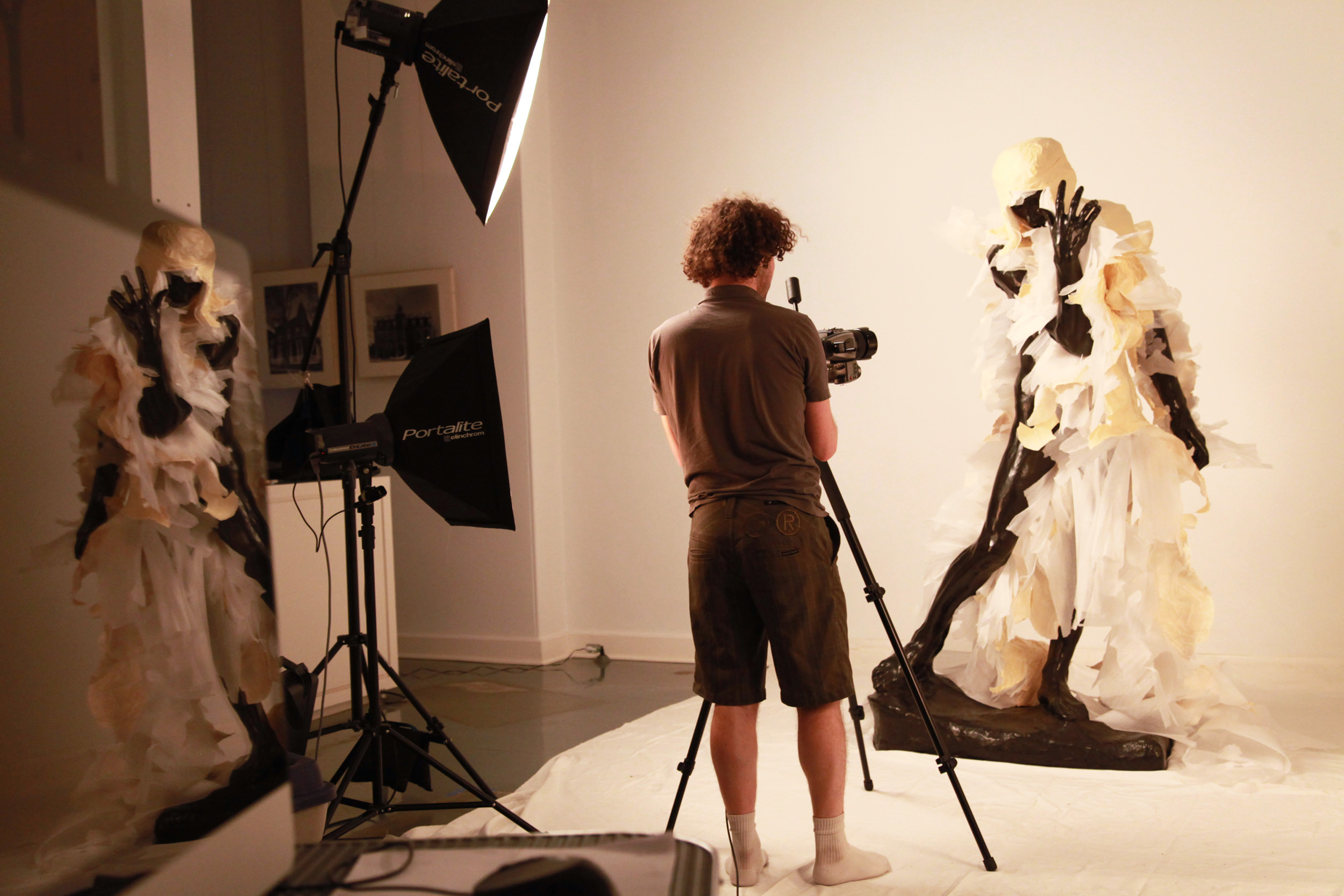Unwrapping Rodin
Unwrapping Rodin (Blue) 1
2010, colour photograph
175 x 127 cm / 69 x 50 in. Edition of 2
Unwrapping Rodin (Blue) 9
2010, colour photograph
175 x 127 cm / 69 x 50 in. Edition of 2
Photographs
Unwrapping Rodin (Blue) 4
2010, colour photograph
175 x 127 cm / 69 x 50 in. Edition of 2
Unwrapping Rodin (White) 4
2010, colour photograph
175 x 127 cm / 69 x 50 in. Edition of 2
Unwrapping Rodin (Blue) 6
2010, colour photograph
175 x 127 cm / 69 x 50 in. Edition of 2
Unwrapping Rodin (Blue) 7
2010, colour photograph
175 x 127 cm / 69 x 50 in. Edition of 2
Unwrapping Rodin (White) 7
2010, colour photograph
175 x 127 cm / 69 x 50 in. Edition of 2
Unwrapping Rodin (White) 6
2010, colour photograph
175 x 127 cm / 69 x 50 in. Edition of 2
Unwrapping Rodin
The Unwrapping Rodin photographs are a new step in my ongoing exploration of Auguste Rodin’s sculptural work, mostly focused on his seminal work Les Bourgeois de Calais (1895). The other works I have completed are Age of Bronze (2004), Burghers of Seoul: Recast and Reshoot (2006), and Les Bourgeois de Calais: Crated and Displaced (2010).
In 2005 Phyllis Lambert came to see an exhibition of mine, and we started chatting. She asked me what I was working on next, and when I replied that I was going to Seoul to work on a project around The Burghers of Calais she invited me to come and see her Burgher, a full-size nude of one of the Burghers, Pierre de Wissant (Rodin first made nude versions of the six Burghers before draping them with cloth for the final grouping). When I visited her place to see this sculpture for the first time in 2005 she mentioned having taken some photographs that she wanted me to see. A week or so later she sent me a sequence of slides she had shot some 30 years ago while unwrapping the recently transported bronze. Having read several books about Muybridge1 and Marey I could not help but see these images as frozen moments of action, frames from an imaginary movement created by peeling away the chrysalis-like packing material used to transport the sculpture.
With all of this in mind I had the idea to restage and reshoot this sequence of images. Being restaged they automatically lose the personal and loose feeling of the originals and approach documentary photographs of sculpture such as we might see in an art history text. However the protective wrapping and the masking tape, which would never be seen in a textbook, take equal footing in relation to the bronze they are attached to. At the same time the sequence reads as movement, as a sculpture pushing away its covering and revealing its impenetrable bronze surface. Restaging these photos, hiring a professional conservator to rewrap the sculpture for the sole purpose of being unwrapped and photographed, creates a series of images that are quite similar to the images they are based on yet produced for different reasons using different means. This transposing is in a way similar territory to what I was interested in when making Cuba Still (Remake) in 2004-2005.
I chose to print these photos at a larger size than I have ever printed before, the reason for this is that I wanted the photographs to occupy space in way similar to how a sculpture does, to confuse the distinction between an object and a photograph of an object.
1It is interesting to note that Rodin, at first a critic of photography, was a subscriber to Muybridge’s Animal Locomotion.
Unwrapping Rodin (Blue) 1-9
2010, colour photographs
175 x 127 cm / 69 x 50 in. Each individual image is in an edition of 2
Unwrapping Rodin White 1-9
2010, colour photographs
175 x 127 cm / 69 x 50 in. Each individual image is in an edition of 2
Installation Views
Unwrapping Rodin (Blue) 1 - 9 as installed at the Musée d'Art Contemporain de Montréal, Fall 2010
Production Images
This project has been presented in the following exhibitions:
2010, BGL/Pascal Grandmaison/Adad Hannah/Karen Tam, Musée d'Art Contemporain de Montréal.
































